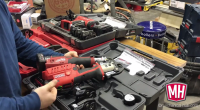I turned 40 in 2017 so it’s official now that half my life I’ve been working as a plumber professionally. In that time I’ve completely wrecked my shoulders, hands and knees. I’m not at all proud of that, it just is the way it is At this point. That’s nothing new for anyone that’s been Read more
ShopTalk
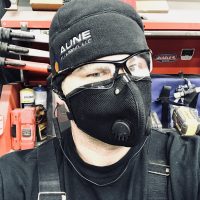
I turned 40 in 2017 so it’s official now that half my life I’ve been working as a plumber professionally. In that time I’ve completely wrecked my shoulders, hands and knees. I’m not at all proud of that, it just is the way it is At this point. That’s nothing new for anyone that’s been in the trades for more than 10-15 years. I’ve since made a lot of changes to how I handle materials and use tools (the right tools for the job) but I’ve also changed how I take care of myself physically. What I’ve always been lacking is a strong discipline to consistently wear appropriate PPE while working.
This is also nothing new for anyone working in the trades. I’m changing that this year. I challenge you to do so as well. I’ve been relatively lucky to this point, my eyes are both intact and strong so far but my hearing could be better. I never hit the floor without knee protection but I don’t always wear safety glasses. I have zero excuses, I own it all and none of it is out of reach or as expensive as missing a day of work or having surgery. Join me in making 2018 a safer, more productive year.
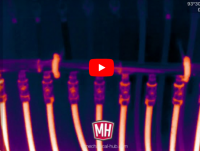
Infrared radiation, or simply infrared or IR, is electromagnetic radiation (EMR) with longer wavelengths than those of visible light, and is therefore invisible without specialized imaging devices that can detect and display the electromagnetic radiation. Infrared imagers have long been available to consumers and professionals but at no point in history has this technology been Read more
Infrared radiation, or simply infrared or IR, is electromagnetic radiation (EMR) with longer wavelengths than those of visible light, and is therefore invisible without specialized imaging devices that can detect and display the electromagnetic radiation. Infrared imagers have long been available to consumers and professionals but at no point in history has this technology been so affordable. As a plumbing and heating contractor of over twenty years in the business I highly recommend exploring what is available in the market today.
I have been using infrared imagers on the job for only a handful of years, lately because of the cost I have purchased a couple new devices that make having the technology literally in my pocket a reality. The SEEK CompactPro and Flir One Pro both connect to my iPhone and offer the ability to quickly diagnose problem areas on heat exchangers, piping, pumps and more as simple as plugging the device into my phone and starting an app. Mobole phone imaging deivices range in cost from $250-450 US and have been tested in the field for more than two years now.
Handheld imagers are available from multiple manufacturers such as Fluke, Flir, Milwaukee and more. the latest imagers developed with the skilled trades in mind offer just the right amount of features and resolution needed to get the job done without clogging up the interface with unneeded features in tune with more precise measurements needed in other fields of work. Here is a very brief but to the point video of just one of the many uses I have daily for infrared imagers. I hope this helps.
https://www.youtube.com/watch?v=sW3OhW81UC4
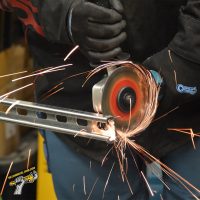
Many pro tradesmen and women work with grinders daily, with the advancement in battery tool technology cordless grinders have become a favorite tool for many trades because of the speed and versatility they offer. Small grinders fit into hard to reach areas and offer the ability to cut materials at speeds other tools cannot match Read more
 Many pro tradesmen and women work with grinders daily, with the advancement in battery tool technology cordless grinders have become a favorite tool for many trades because of the speed and versatility they offer. Small grinders fit into hard to reach areas and offer the ability to cut materials at speeds other tools cannot match.
Many pro tradesmen and women work with grinders daily, with the advancement in battery tool technology cordless grinders have become a favorite tool for many trades because of the speed and versatility they offer. Small grinders fit into hard to reach areas and offer the ability to cut materials at speeds other tools cannot match.
Simply put, grinders are such a useful tool and are found on the trucks of HVAC techs, plumbers and electricians alike.
For years I have used my grinder with a thin cutoff wheel for cutting into cast iron plumbing stacks and lateral drains and until just a couple months ago the wheel of choice has been a bonded abrasive disc. I have completely replaced all abrasive discs with the new Diablo Diamond Cutoff Wheels for many reasons, chief among them being safety.
We have all heard of bonded wheels shattering under load and causing the user physical harm. There’s no shortage of pictures available on the Internet of bits and pieces of abrasive wheels embedded in various body parts [go ahead and Google it but I don’t recommend it for anyone with an aversion to blood or graphic bodily injury, do so at your own risk] Diablo’s answer to safety concerns regarding metal cutoff wheels is the new solid metal cutoff discs that will not shatter or break when dropped or banged around a little on the site or in the truck.
These wheels will outperform abrasive cutoff wheels in life expectancy hands-down. Its important to know straight away that the continuous-edge diamond grit metal cutting discs are not all-day production cutoff wheels but for the tradesperson who uses a grinder for cutting occasionally throughout the day or week, this is a solid and safe alternative to a bonded wheel.
The speed in which bonded wheels remove materials is always going to be hard to beat. This cutoff disc will not match or beat an abrasive wheel but it will last considerably longer and remain the same diameter throughout its useful life. That’s not ever going to be true for a bonded wheel; yet another advantage Diablo’s disc offers the user.
For the last couple months we have actually began to use our grinders more because of these discs. Knowing I don’t have to search for a new cutoff wheel for nearly every tie-in out of concern that the disc already loaded on the grinder may have been compromised in handling or storage. Instead I have confidence that the solid metal disc will not shatter when I plunge thru the sidewall of the 4” no-hub in front of me.
Cutting pipe is not the only use we have for these wheels though, they’re often used to cut sheet metal, threaded rod, steel pipe and even during demo work the occasional slew of copper tubing nightmare.
One criticism I have for the design of the diamond grit cutoff wheels would be that they could benefit from an increase in thickness. They’re very thin and can become warped when put under high loads in heavy cuts. That’s an obvious problem requiring immediate replacement for not only performance but safety as well. Increasing the thickness of the disc and adding a segmented rim might best realize this. I have had multiple conversations with the design engineers and product managers about these wheels and have little doubt that this is just the first of an expanding diamond cutoff wheel product line.
So far I have only found these available at The Home Depot. Sizes ranging from 4.5”, 5”, 6” & 7” and costs starting at $14.97 in my local market (MN).
Overall I would definitely recommend exploring the new diamond grit cutoff wheels from Diablo. If you’re using a grinder for occasional metal cutting then you owe it to yourself to increase the safety aspect of this task.

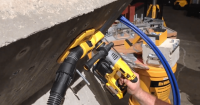
Dewalt’s newest anchor system, the Mini-Undercut anchor is the first of its kind to gain all approvals and seismic ratings for use in post-tension slabs and can be used in a variety of concrete base materials like thin slab, hollow-core pre-cast etc. The anchor itself requires only 3/4” drill depth and has seismic code ratings Read more
Dewalt’s newest anchor system, the Mini-Undercut anchor is the first of its kind to gain all approvals and seismic ratings for use in post-tension slabs and can be used in a variety of concrete base materials like thin slab, hollow-core pre-cast etc. The anchor itself requires only 3/4” drill depth and has seismic code ratings for holding values of up to 4” pipe. The drill bit has a fixed stop only allowing for 3/4” drill depth, the setting bit can be used in drill mode without damaging the anchor threads.
We learned of this anchoring system while attending the #toughinthesouth new tool event in Nashville, TN.
https://www.youtube.com/watch?v=YGH8T6acmSs
Video footage credit: Heather Aune, mechanical-hub.com

